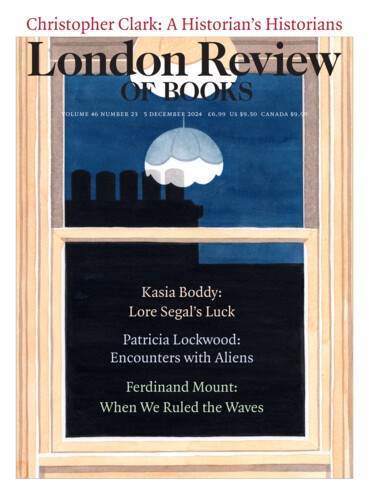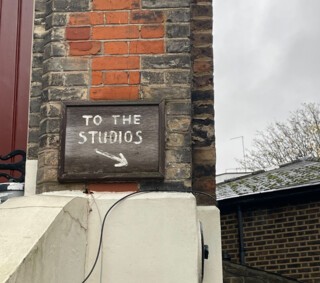The central staircase at Camden Town Hall is made of white marble from Carrara and is more lustrous than any marble staircase you’re likely to see in Rome. The building was designed for the Borough of St Pancras by Albert Thomas, a disciple of Lutyens, and opened in 1937 as St Pancras Town Hall. Twenty-eight years later, the borough was one of three – along with Holborn and Hampstead – brought together to form Camden. A seven-year, £60 million renovation of the town hall began in 2016. The work is now finished, the building gleams inside and out, and no one could say this entrance hall isn’t impressive, or a statement: there’s no sense that this is a council with a looming budget crisis.
The council chamber is on the first floor, and it’s here that the planning committee meets once a month to debate and decide on new building proposals. In mid-November, the committee heard five of them, one of which has a bearing on where I live. I went to hear the discussion. The staircase had just been washed; its steps were as white and slippery as an ice rink.
Three of the five cases heard by the committee that evening were about the redevelopment of car parks and adjacent buildings, all of them the consequences of bomb damage during the Blitz or the rocket attacks of the last year of the Second World War. Camden wasn’t hit as badly as the City and the East End, but with three railway stations and their goods yards the area was a major target. Many of the buildings that have gone up in Camden over the last eighty years stand on what were once bomb sites.
The site proposed for new flats on the northern corner of Harrington Square, close to Mornington Crescent station, is one of those car parks. The houses that stood there were destroyed on the third day of the Blitz, soon after 5 p.m. on 9 September 1940. British Pathé newsreel footage shows people rushing to the underground shelter in the square shortly before the bombs fell – the camera captures so many pairs of shoes hurrying into the ground. The footage then turns to the aftermath of the raid: an empty double-decker bus blasted onto the façade of a house, neighbouring buildings either destroyed or damaged beyond repair. Eleven people were killed and many others were wounded. The raid was said to be unsuccessful – most Luftwaffe formations were broken up before they reached London that day – but this depends on what you mean by ‘unsuccessful’.
Harrington Square has always been a triangle, never a rectangle. On its west side is the former Carreras Cigarette Factory, makers of Craven A, built ten years before St Pancras Town Hall. With Gilbey’s gin distillery on the canal in central Camden and the whisky stored in the nearby Roundhouse (then a bonded warehouse), Camden’s reputation for the good-that-is-also-bad – booze, cigarettes, drugs – is long-standing. The Carreras factory was undamaged during the war, but every other building on the square was affected to a greater or lesser extent. On Map 49 of Laurence Ward’s London County Council Bomb Damage Maps 1939-45, the types of damage to the square are indicated on a scale from black – total destruction – through purple, red and orange to yellow, the lightest damage. These maps illustrate the bombing very differently from photography; they reveal the sheer vastness of the destruction. In Steve McQueen’s new movie, Blitz, the camera rises out of a bomb site in the final scene, slowly expanding the field of vision so as to convey the magnitude of what the bombs have done, but the camera can only see so far: the maps give you an idea of what happened further off towards the horizon.
David Bomberg was a fire-watcher in Kensington for much of the war, and was inspired by Piranesi’s etchings of the ruins of ancient Rome as he set about his charcoal drawings of London in 1944 and 1945. Nothing came of the topographical book he hoped to publish based on those charcoals, but sheets survive. One formed the basis of his painting Evening in the City of London, now at the Museum of London, a depiction of St Paul’s Cathedral surrounded by destroyed buildings. But the black, often smudged charcoals better convey what is depicted: those incinerated buildings.
Frank Auerbach was one of Bomberg’s pupils, and like him was much taken by the bombed craters and building sites he saw on Oxford Street and along the Thames in the 1950s. The Courtauld held an exhibition of Auerbach’s images of bombed London fifteen years ago. ‘London after the war was a marvellous landscape with precipice and mountain and crags, full of drama,’ he wrote in the catalogue. He painted several pictures of the foundations of the Shell Centre next to the then new Royal Festival Hall. ‘I would go and draw them by inching along the planks, out over the excavation, just clinging on and dodging the wheelbarrows. I have no head for heights. Everything you can be frightened of, I am – I can’t even swim.’ One thing Auerbach wasn’t frightened of was an audience. Before he chose paint, he had briefly considered becoming an actor. He was taken by the 80-year-old music hall performer George Robey, and the way he went about his work. ‘I used to admire him – going out alone in front of a hostile crowd, not disguising his contempt for the audience, and beating them every time. Wearing the resistance of his medium down, like drawing, in a way; this was grist to my mill.’
In 1954, Auerbach took over the studio of his friend Leon Kossoff, a few minutes’ walk from Harrington Square. He kept it until he died on 11 November this year, three days before Camden’s planning committee voted in favour of allowing new flats to be built on the square’s old bomb site. In his monograph on Auerbach from 1990, Robert Hughes writes that ‘the flavour of Camden Town recalls a fact of Sickert’s work which applies to Auerbach’s today: its attachment to the common-and-garden, to the compost of life.’ Compost? That word implies fertility and regeneration, but Auerbach’s palette is reminiscent of inanimate, toxic material: pools of tar, sand and cement, broken brick and burned wood – the bombed London he’d seen for himself. If Auerbach is proposing anything, it’s that in the least promising settings there can be fresh starts.
In what has become a well-known quotation, Auerbach told Hughes: ‘I have a strong sense that London hasn’t been properly painted. New York has been – think of Stella’s Brooklyn Bridge or O’Keeffe’s Shelton with Sunspots. Paris has been painted to the last details. But London? Monet on the Thames, Derain at the docks; bits and pieces, rather spottily, by Whistler and Sickert. But it has always cried out to be painted, and not been. The things Rimbaud and Verlaine felt about it! They cried out to be recorded and preserved against time.’ (Those Monet Thames-scapes are currently on show at the Courtauld, their colourful sky formations a result of pollution from London’s factories, ships and power stations.) In no sense was Auerbach a topographical artist. Primrose Hill, Mornington Crescent and the entrance to his studio were his only external frames of reference from the 1960s. ‘To the Studios’, reads the sign pointing towards his own studio, and he painted those words over and over again in his pictures. Auerbach’s London is in the paint, not the scene itself, and to that London he was devoted. ‘I hate leaving my studio,’ he said. ‘I hate leaving Camden Town, I hate leaving London. I don’t think I’ve spent more than four weeks abroad since I was seven.’
In the early 1950s, Auerbach and Kossoff had aimed for failure – making things difficult for themselves so as to toughen their art. When the Covid lockdown began in March 2020, Auerbach found he was unable to get to his studio or to see the people who would typically sit for him, week after week. In his wife’s flat, oil paints were out of the question because of the fumes. So acrylic, graphite, Indian ink and chalk became his materials. Without anyone to paint he turned to himself. ‘I did draw one or two self-portraits before,’ he later said, ‘but I’ve always felt there was something a bit banal about doing self-portraits. I didn’t find actual formal components of my head all that interesting when I was younger, smoother and less frazzled. Now that I’ve got bags under my eyes, things are sagging and so on, there’s more material to work with.’ Auerbach made twenty self-portraits, some in bright colours, some black and white, all delineated in strong, jagged lines.
That sign, ‘To the Studios’, is nailed to the wall of a house that once belonged to the 19th-century writer George MacDonald, whose friends included Ruskin, Whitman and Charles Dodgson – Lewis Carroll – for whom MacDonald was ‘master’ and one of Alice’s first readers. An arrow points down a short flight of steps to four studios – no white marble on this staircase. When I passed by a few days ago, David Dawson, the artist and photographer, was waiting for his assistant; they were there to photograph the interior of the studio as it was when Auerbach died. As far as I can tell from looking at his pictures, ‘To the Studios’ are the only words Auerbach ever painted.
Send Letters To:
The Editor
London Review of Books,
28 Little Russell Street
London, WC1A 2HN
letters@lrb.co.uk
Please include name, address, and a telephone number.


